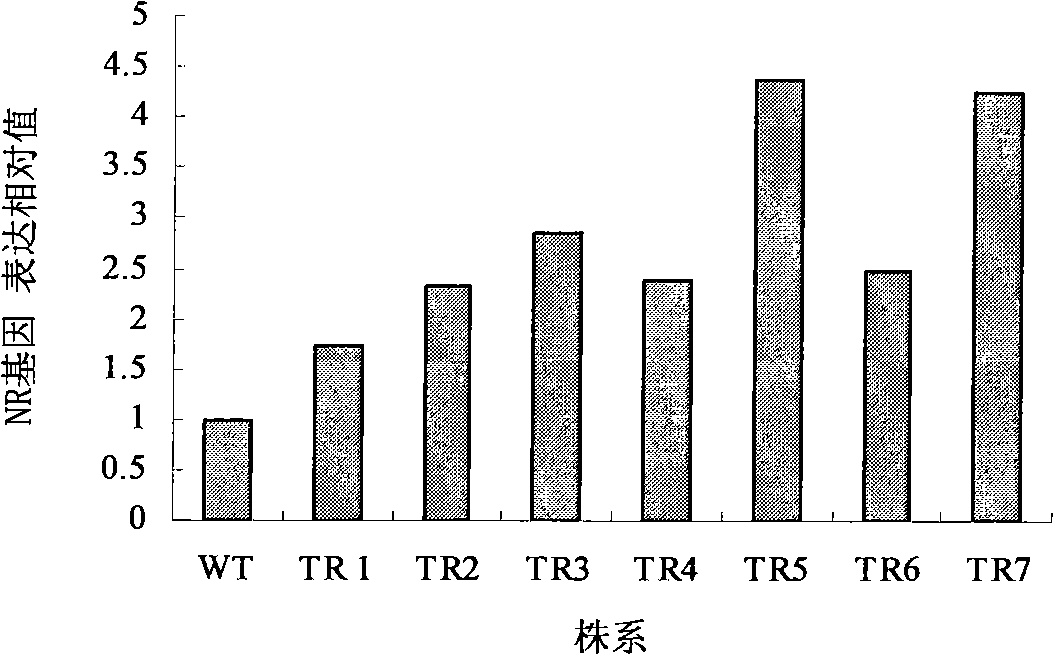Nitrate reductase gene BcNR of Chinese cabbage
A technology of head cabbage and reductase, which is applied in the field of molecular biology and biology, and can solve problems such as difficult to obtain satisfactory results
- Summary
- Abstract
- Description
- Claims
- Application Information
AI Technical Summary
Problems solved by technology
Method used
Image
Examples
Embodiment Construction
[0027] (1) Cloning of BcNR gene cDNA
[0028] The non-heading Chinese cabbage variety 'Suzhouqing' (a local variety in Jiangsu, purchased from the market) was selected as the material. After the cotyledons were flattened, total RNA was extracted from the leaves according to the instructions of the Simply P Total RNA extraction kit from Bioflux Company, and 2 μg of total RNA was taken to synthesize cDNA. The cDNA product was digested with RNase.
[0029] According to the conserved nucleotide sequences in Arabidopsis NIAI and NR Brassica napus, design three pairs of specific primers NRF1 / NRR1: SEQ ID NO.3 / SEQ ID NO.4, NRF2 / NRR2: SEQ ID NO.5 / SEQ ID NO.6, NRF3 / NRR3: SEQ ID NO.7 / SEQ ID NO.8, use LA Taq enzyme to carry out conventional polymerase chain reaction (PCR), amplify the BcNR gene segmentally, the amplification program is: 94°C Pre-denaturation for 5 minutes, denaturation at 94°C for 30 sec, renaturation at 55°C for 30 sec, extension at 72°C for 1 min and 30 sec, after 35 ...
PUM
 Login to View More
Login to View More Abstract
Description
Claims
Application Information
 Login to View More
Login to View More - R&D
- Intellectual Property
- Life Sciences
- Materials
- Tech Scout
- Unparalleled Data Quality
- Higher Quality Content
- 60% Fewer Hallucinations
Browse by: Latest US Patents, China's latest patents, Technical Efficacy Thesaurus, Application Domain, Technology Topic, Popular Technical Reports.
© 2025 PatSnap. All rights reserved.Legal|Privacy policy|Modern Slavery Act Transparency Statement|Sitemap|About US| Contact US: help@patsnap.com

